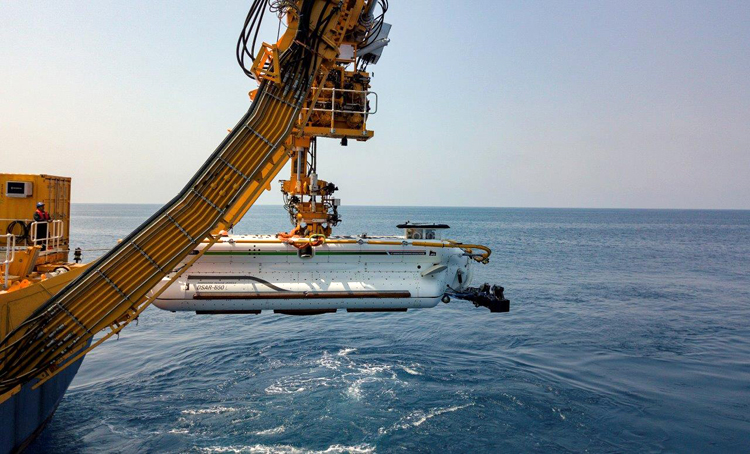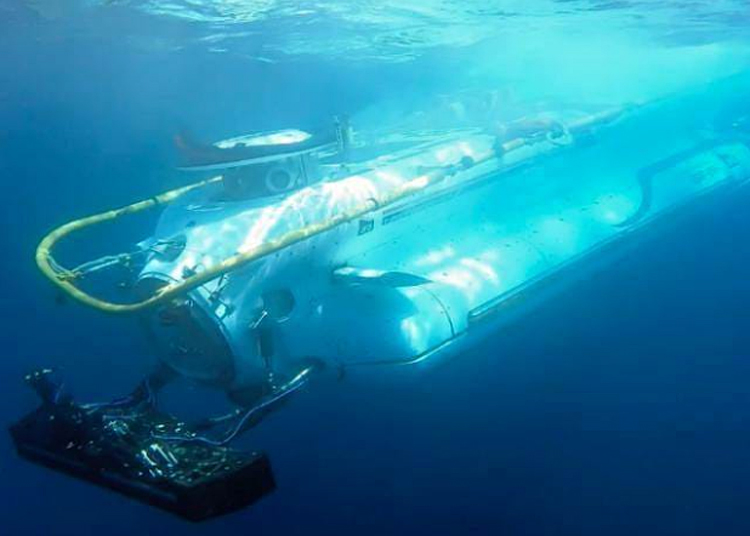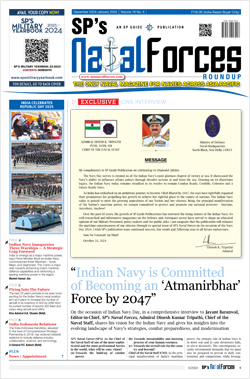INDIAN ARMED FORCES CHIEFS ON OUR RELENTLESS AND FOCUSED PUBLISHING EFFORTS

The insightful articles, inspiring narrations and analytical perspectives presented by the Editorial Team, establish an alluring connect with the reader. My compliments and best wishes to SP Guide Publications.

"Over the past 60 years, the growth of SP Guide Publications has mirrored the rising stature of Indian Navy. Its well-researched and informative magazines on Defence and Aerospace sector have served to shape an educated opinion of our military personnel, policy makers and the public alike. I wish SP's Publication team continued success, fair winds and following seas in all future endeavour!"

Since, its inception in 1964, SP Guide Publications has consistently demonstrated commitment to high-quality journalism in the aerospace and defence sectors, earning a well-deserved reputation as Asia's largest media house in this domain. I wish SP Guide Publications continued success in its pursuit of excellence.
- MoD initiates comprehensive review of Defence Acquisition Procedure 2020, pushes for defence reforms
- G7: The Swansong
- Kalinga Connect: South Asia to Polynesia
- Advanced MRSAM for India for a greater firepower
- Must Credit DRDO for Operation Sindoor, now what is next for defence R&D?
- Operation Sindoor | Day 2 DGMOs Briefing
- Operation Sindoor: Resolute yet Restrained
Deep Underwater Rescue
 |
The Author is Former Director General of Information Systems and A Special Forces Veteran, Indian Army |

Indian Navy’s first Deep Submergence Rescue Vessel (DSRV) procured from Britain (James Fishes Defence of UK) to meet unique requirements of our Navy completed Sea Acceptance Trials successfully last year in June. The trials involved an underwater ‘mating’ of the DSRV with the hatch of a submerged submarine to carry out transfer of personnel. The hatch of the submarine was reportedly strengthened before commencement of the trial as per the directive of Submarine Design Directorate at Naval Headquarter. This was reportedly done so that it does not buckle with the additional load of DSRV. Presumably this was an extra precaution because of the trials. However, when deployed in actual operations, this type of strengthening of the submerged submarine is hardly possible.
The DSRV was inducted into the Indian Navy last year itself along with associated equipment. The DSRV has a Side Scan Sonar for locating the position of the submarine in distress at sea, providing immediate relief by way of posting Emergency Life Support Containers with the help of Remotely Operated Vehicle (ROV) and thereafter rescuing the crew of the submarine using the DSRV itself. In a submarine accident, rapidity of response is most crucial to safety of life. To ensure early mobilisation, the system has been procured in flyaway configuration that permits rapid transportation of the Rescue System from the base to the exact location of the distressed submarine by transportation using air/land/sea vessels. It has the stated capability to rescue personnel from a distressed submarine (DISSUB) up to a depth of 650 m and it is the latest in terms of technology and capabilities of the Navy. The IN has ordered two Systems which shall be based on the West and East Coast of India respectively to provide redundancy, high operational availability and early response to deal with a submarine contingency. Significantly, during the extensive Sea Trials that began last year, many records were reportedly set. The DSRV dived to over 666m, the Remote Operations Vehicle (ROV) dived to 750 m and the Side Scan Sonar dived to 650 m. Live undersea mating with different types of submarines along with transfer of personnel from submarine to DSRV was also achieved, which simulated submarine rescue. The Navy has stated that “with this capability, India has joined a select league of nations which have this unique capability and we are now in a position to not only provide rescue cover to our own submarines but also to other friendly nations in the IOR and beyond, adding that our vision is to emerge as a centre of regional excellence for Submarine Rescue Services in line with the stature of our great nation”.

The Indian Ocean Region (IOR) is fast becoming the centre of gravity of future conflict especially with China’s aggressive moves. Chinese ships and nuclear including snooping in the vicinity of Andaman and Nicobar Group of Islands (ANI) and prowling in India’s exclusive economic zone (EEZ) without obtaining permission. In recent times, Chinese military and commercial facilities have emerged along its Sea Lanes Of Communication (SLOC) through strategic investments in several Indian Ocean ports (like Gwadar in Pakistan and Hambantota in Sri Lanka) under guise of its Belt and Road Initiative (BRI). China is also engaged in port development activities in Myanmar and Thailand.
The protection and safeguard of all present or evolving economic assets fall within the ambit of Indian Navy’s Flag Officer Defence Advisory Group (FODAG). The FODAG’s role is to advise various ministries — Defence, Petroleum & Natural Gas and Shipping on all planning and policy aspects of offshore security and defence covering EEZ, territorial waters and other Maritime Zones of India. Submarines of the Indian Navy deployed in forward areas are critical to showcase India’s interest in the IOR but underwater operations carry inherent risks. Denial of access to unauthorised vessels inside India’s Offshore Development Area is a major challenge, with warships and submarine involved in the surveillance. Submarine operations can provide high-quality ISR (Intelligence, Surveillance and Reconnaissance) information during peace times and this capability comes from the submarine’s ability to enter an area to watch, listen and to collect the information because it can operate stealthily close to the action and capture multiple elusive signals. Acquisition of DSRVs improves the Navy’s combat capacity to deal with accidents caused in submarines. It also provides the psychological punch to submariners (and their families) that in case of any accident aboard their submerged vessel, the Navy has the capability to rescue them post haste.





